18 Best Lisbon Foods To Try in 2025
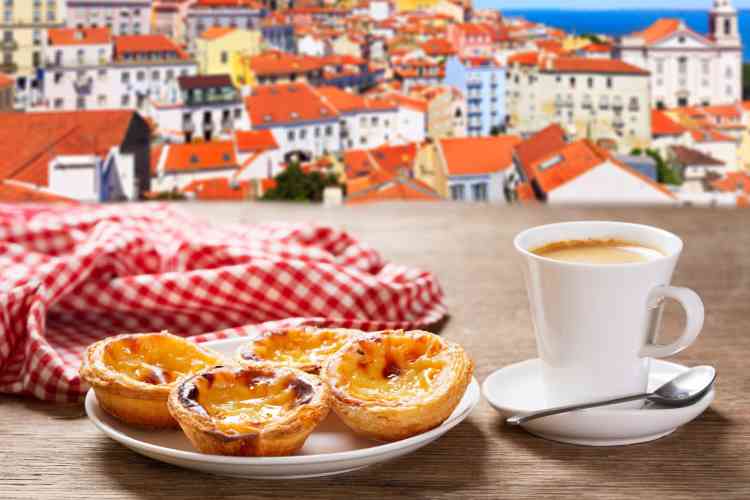
Known as the city of the seven hills, Portugal’s cosmopolitan capital is one of the world’s most beautiful and a top spot for iconic, must-try Lisbon foods. Of course, sweet tooths may head to Lisbon craving its famed custard treat, but there’s far more for gourmands to discover beyond pastel de nata.
By all means, head to the nearest bakery just as soon as you step out of the airport and satisfy that craving for custard. But once you’ve got it out of your system, there’s a smorgasbord of delights, sweet and savory, just waiting to be discovered on the Lisbon food scene.
As the University of Massachusetts notes, Lisbon is a city full of charm, culture, and history, located along the scenic Atlantic coast. It’s the perfect backdrop for discovering iconic Lisbon foods.
Sure, the city’s famed hills are sure to put your legs through their paces as you try to make the most of it all. But given the volume of calories you’ll want to consume by the time you’ve finished reading this guide to the best Lisbon foods, that may not be a bad thing.
Jump to Section
What Food Is Lisbon Known For?
We’ve touched on this already, but no guide to Lisbon food would be complete without a mention (or, in all likelihood, several) of pastel de nata — the world-renowned, flaky tart filled with decadent custard. However, while they may taste better in Lisbon than anywhere else in the world, the locals couldn’t survive on pastries alone.
Instead, Lisbon food has evolved over the years to draw on the city’s proximity to the coast, with seafood playing a huge part in shaping its most delicious dishes. From grilled sardines and fried mackerel to clams with garlic and coriander sauce, those who love the fruits of the sea will find themselves spoiled for culinary choice when they visit Lisbon.
Throw in a few hearty carnivorous specialties like pork-beef sandwiches and Portuguese sausage, and Portugal’s capital quickly becomes one of the best foodie cities in the world. Lisbon foods truly offer something for every palate.
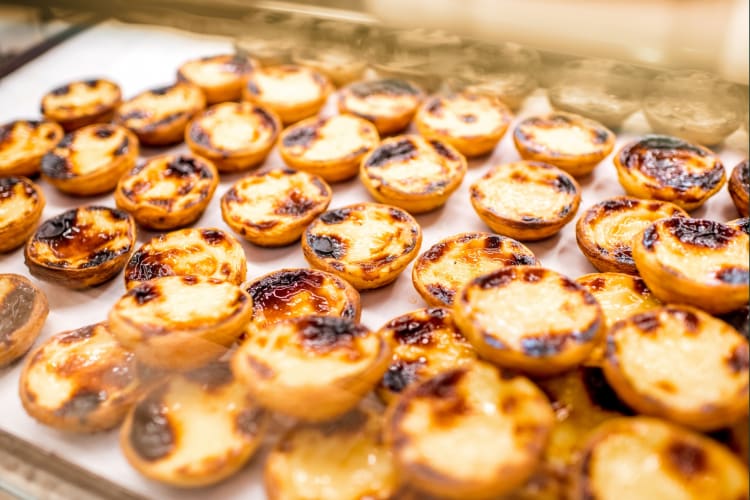
The 18 Best Foods in Lisbon To Eat
1. Caldo Verde
Perfect for warming your soul after a breezy day by the sea, caldo verde is Portugal’s most famous soup. It’s light and packed with goodness, filled with shredded kale and the spicy flavor of chorizo. Often served with cornbread and white wine, this Lisbon food is considered indigenous to the Minho region of Portugal, developed from local peasant traditions.
In terms of where to find it, that should be easy. Many tascas — inexpensive traditional Portuguese restaurants — will include this Lisbon food staple on their menus. These establishments are a key part of Lisbon life, offering a convivial and welcoming setting in which to immerse yourself in the local community and culture.
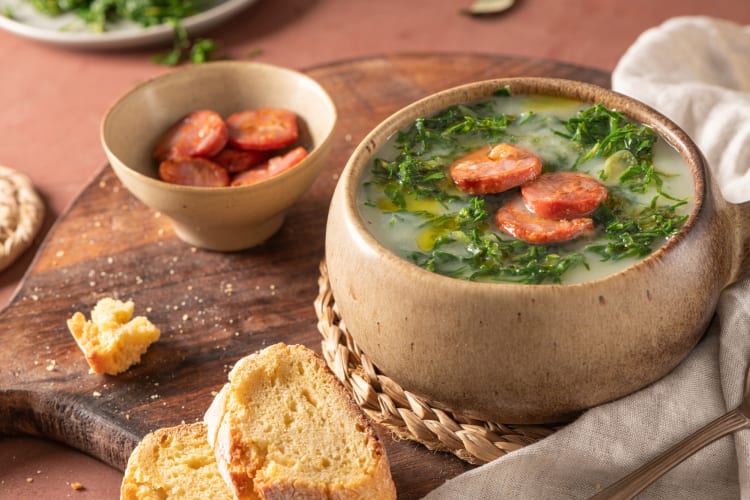
2. Bacalhau com Natas
Another comforting Lisbon food, this creamy codfish casserole comprises salted and shredded cod. Layered with sliced potatoes and a velvety, creamy sauce, it’s flavored with spices that vary from household to household. Once the chef is happy with the seasoning, it’s baked in a large casserole dish, usually topped with a sprinkling of cheese.
Bacalhau, or salted cod, has been a staple in Portuguese cuisine since at least the 16th century. In fact, you’ll find this Lisbon food featured in dishes across Portuguese colonies, including Angola, Cape Verde and Brazil.
To taste it in casserole form as detailed above, you’re sure to find it on the menus of many of the city’s best restaurants. And since each chef has their own special blend of seasonings, no two renditions of this Lisbon food are likely to taste the same.
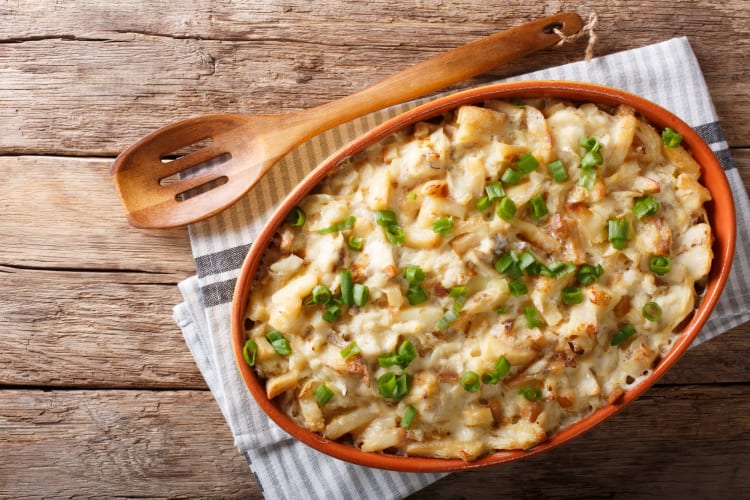
3. Bacalhau à Brás
Another use for salted cod, this version pairs shredded fish and thin matchstick potato pieces fried until crisp, serving them on a bed of sautéed onions and garlic. Mix in an egg and sprinkle it with fresh parsley and black olives, and you have a quick and easy Lisbon food that’s a favorite for busy families.
It’s believed that this Lisbon food was first conceived in a Bairro Alto tasca. Determined to waste nothing, the owner scraped everything from the bones of the fish, using up the parts deemed less noble, before shredding them up and mixing them |with potatoes and eggs.
Whether or not this is true, it’s generally agreed that it first appeared on Portuguese menus from the mid-19th century. Today, it’s a must-try Lisbon food for anybody hoping to dine like a local. Most tascas in the city will have a version of this on the chalkboard.

4. Bolinhos de Bacalhau
Yes, more codfish — this time in fritters form! In nose-to-tail fashion, this dish combines leftover codfish with mashed potatoes, herbs and spices to make dumplings, which are fried until golden and absolutely delicious. You’re as likely to find this Lisbon food served as a starter as you are on the entrée menu, served alongside rice and salad.
The exact origins of this dish are unclear, but it’s widely believed that it was first conceived sometime during the early 20th century, probably in the country’s Minho region. Again, you won’t struggle to find restaurants serving this seafood staple, making it an easy Lisbon food to tick off your foodie bucket list.

5. Açorda de Marisco
Another Lisbon food to draw on the city’s natural ocean larder is açorda de marisco, which roughly translates as “bread soup of seafood”. It’s made from bread mashed with garlic, cilantro and olive oil, topped with poached eggs. Many different types of seafood can be added to the base, but it’s most commonly served with shrimp.
The dish has Arabic origins, with “açorda” being the Arabic term for a broth-making method based on a neutral base of bread. It can be traced as far back as Portugal’s Arab occupation between the 8th and 13th centuries. Today, you’ll find this Lisbon food on the menus of many restaurants around the city.
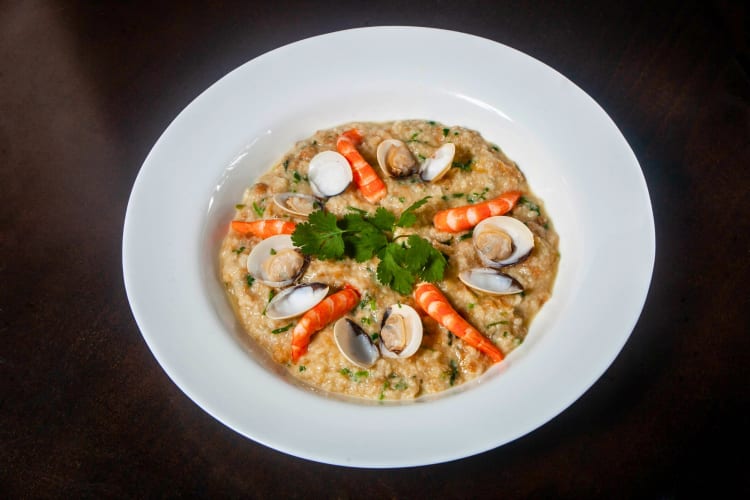
6. Bifana
This pork sandwich epitomises Lisbon food culture, especially its street food scene, in which you’re sure to find plenty of vendors serving this delicious Portuguese favorite. Seasoned with garlic, pepper and other spices, the sandwich’s name literally translates as “small steak”.
While the origins of this Lisbon food are uncertain, it’s believed to hail from the Portuguese town of Vendas Novas. The pork that fills the sandwich is simmered in a white wine sauce before serving between slices of heated bread.
In the north of the country, you’re likely to find versions of this Lisbon food in which the pork is shredded, with vendors in the south often preferring to use a pork cutlet. Some cooks even swap the wine for beer.
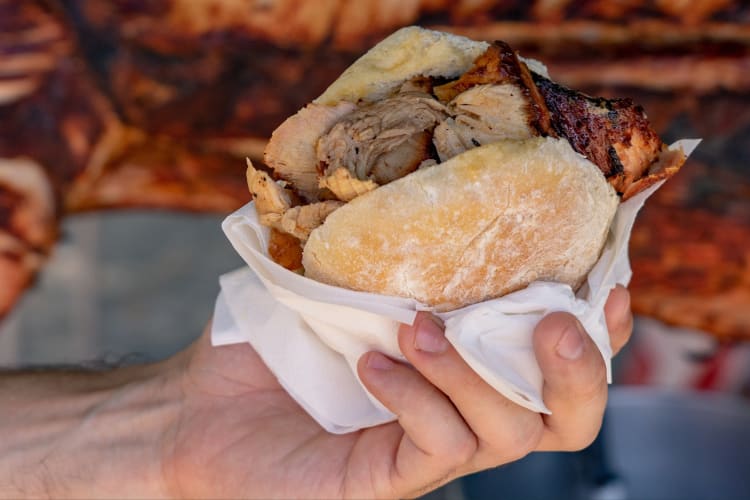
7. Portuguese Sausages
You can’t fully explore Lisbon's food scene without sampling at least one of the country’s favorite sausages. Chouriço, morcela, and alheira are just three you’re likely to come across, usually served grilled or fried.
The first (chouriço) is a spiced pork sausage, while morcela is a blood sausage, recognizable for its deep, almost black-red coloring. Alheira is produced using a combination of poultry, spices and bread.
The latter originated during the 15th century in the Trás-os-Montes region to the north-east of the country. It was conceived there by Sephardic Jews, who fled their homeland in Spain during the Spanish Inquisition.
Today, you’ll find this Lisbon food is used in myriad ways, including stuffing for puff pastry, pizza topping and even stuffed squid. You’ll commonly find it available in supermarkets as well as on the menus of cafés and diners around the city.
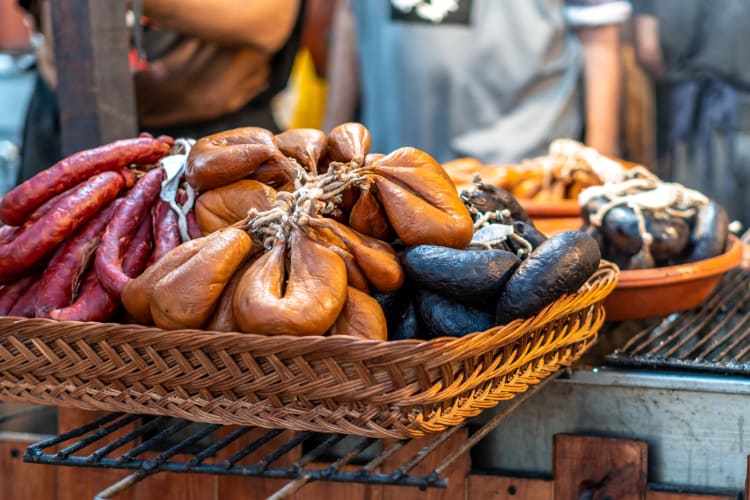
8. Lapas Grelhadas
Grilled limpets may not sound like the most appetizing entry to this list of Lisbon foods, but hear us out. This traditional dish celebrates the unadulterated flavors of seafood from the Portuguese archipelagos, which have found their way into the hearts of foodies on Portugal’s mainland.
The limpets are laid out on a griddle pan before being coated with plenty of butter, garlic and lemon. You’ll usually find this Lisbon food on the appetizer menu, and since they’re usually served sizzling in the pan, this is a showstopping dish for which you’ll want to keep your eyes peeled.
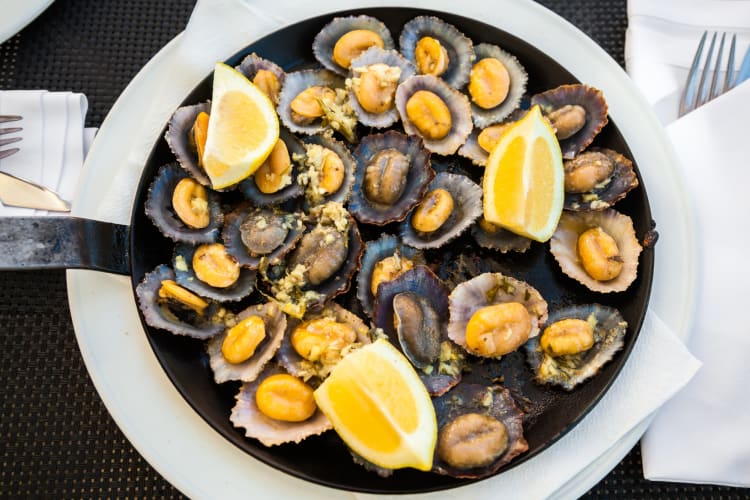
9. Sardinhas Grelhadas
A Lisbon food commonly served during Santos Populares — a month-long festival in homage to Catholic saints and Portuguese culture — the smell of grilled sardines in the air is also a surefire signal that summer has arrived.
The dish dates back to when sardines were a staple in Portugal’s coastal community, when fishermen would prepare their catch on the beach. Today, it’s a Lisbon food served simply with salt and a slice of cornbread, commonly enjoyed at festivals, fairs and other outdoor events, retaining that glorious smell that makes them super easy to find.
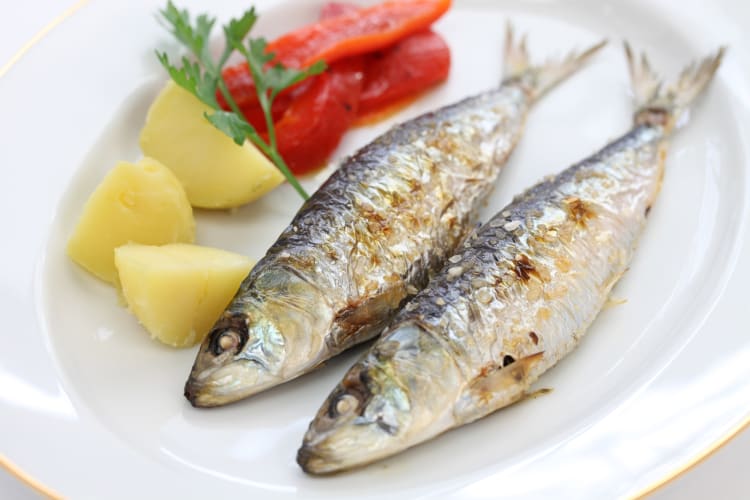
10. Chicharros Fritos (Fried Mackerel)
Another Lisbon food that draws on Portugal’s traditional reliance on the sea for sustenance, fried mackerel is something of a favorite. The traditional way to cook the fish is batter-frying, before consuming the fish in its entirety — bones and all!
It’s perfect for adventurous foodies who dare to take their palates to places that others fear to tread. You’ll likely find it on the menus of restaurants across the city, or if you’re lucky enough to be staying with a local family, chances are they’ll have their own recipe.
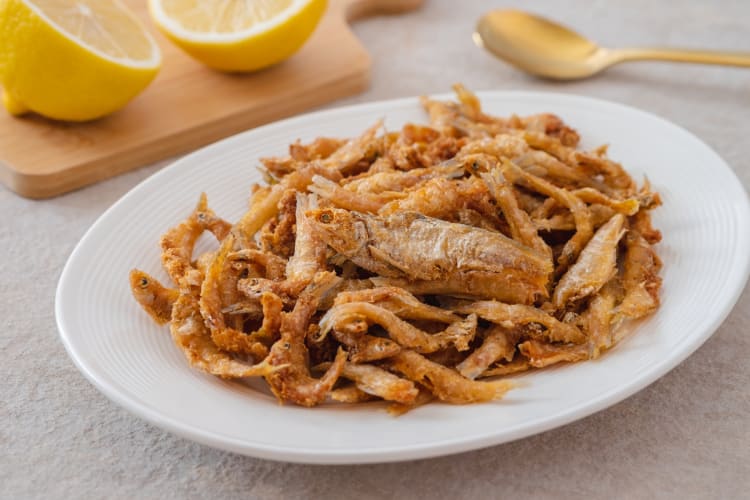
11. Amêijoas à Bulhão Pato
Another one for seafood lovers looking to expand their palate, this traditional Lisbon food sees clams paired with garlic and coriander sauce to produce a dish that’s nothing if not a must-try. White wine brings out the flavor of the clams, drawing the essence from the solid ingredients to create an explosion of flavor with every mouthful.
Those with a sharp eye for Portuguese may notice that only “amêijoas” refers to the food — the rest honors Raimundo Bulhão Pato, a 19th-century Lisbon poet and known foodie. His love for clams makes this staple Lisbon food a must for anyone eager to blend culinary and cultural exploration.

12. Francesinhas
Ah, the Porto sandwich. Known and loved for its layers of toasted bread, hot meats, melty cheese and its signature beer and tomato sauce, this bread-bound bite has a place in the hearts of foodies around the globe, making it a must-try Lisbon food.
Some say that the sandwich was introduced to the country by Napoleonic troops during their invasion of northern Portugal. It’s generally agreed, however, that it was first created by Daniel David de Silva, a Portuguese immigrant.
Upon his return to Portugal in the 1950s, he was determined to recreate his favorite French croque monsieur using local ingredients. Plenty of cafés, restaurants and street vendors sell this Lisbon food, so if the sea air has sharpened your appetite and you need to fill a hole, you needn’t go far to do so.
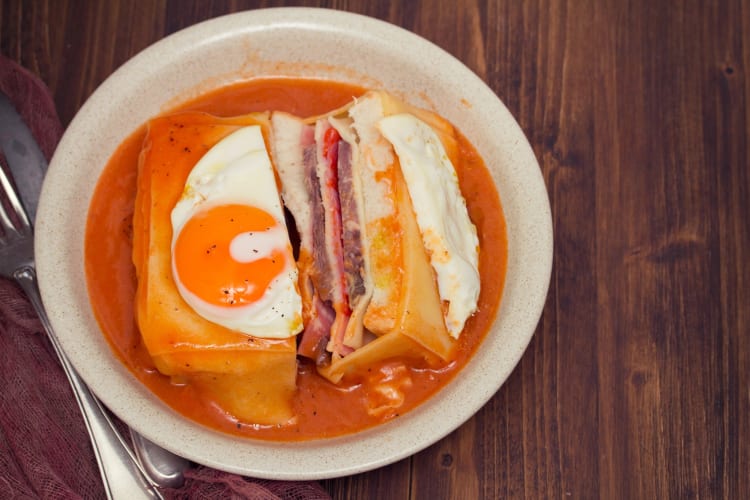
13. Polvo à Lagareiro
It’s back to the ocean for this next Lisbon food. Boiled, roasted and seasoned with a simple yet delicious blend of garlic and olive oil, this lagareiro-style octopus (a “lagareiro" being a person who works in an olive press) is served super crispy and unbelievably tender. It’s usually plated with mashed potatoes and garlic, with plenty of fresh parsley or cilantro on top.
In Portugal, octopus is often eaten at festive occasions and special family gatherings. It’s especially popular on Christmas Eve, its preparation and subsequent consumption viewed as a way to honor tradition and bring families together. It’s also a testament to the delectable simplicity of Portuguese cuisine.

14. Cataplana de Peixe
Next up on our exploration of food in Lisbon is a dish that’s cooked in a pot called a “cataplana”. Designed to lock in the flavor of the ingredients during the cooking process, as you’ll discover for yourself, this results in a symphony of tastes and textures when dinnertime finally rolls around.
Otherwise known as Portuguese fish stew, this Lisbon food commonly uses shellfish and Portuguese sausage to create a crowd-pleasing savory feast. The cooking vessel that gives the dish its name is traditionally made from copper.
Once known for its copper artisans, cataplanas are thought to originate from the Algarve. Some even argue that they can be traced back to Arab roots in North Africa. Either way, keep your eyes peeled for these iconic copper pots. When you find one, be sure to hang around until the goods inside are ready to be served. You’re going to want to try them!
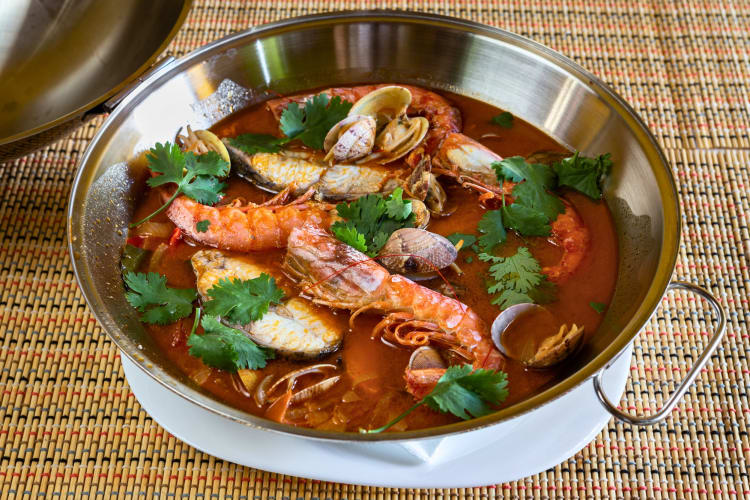
15. Travesseiro de Sintra
Something sweet, that’s right. If it’s possible to have too many pastel de natas, then this next Lisbon food may just be the change that your sweet tooth is looking for. It’s a dessert-like sweet made with puff pastry, filled with egg-and-almond cream and delicately dusted with sugar.
Now popular across the country, these treats are a beloved part of Lisbon’s food scene but actually originated in Sintra. Created by the bakery A Piriquita in 1862 at the request of King D. Carlos I, they became a royal favorite. Today, they’re a must-try for any foodie, so keep an eye out for them on the chalkboards of Lisbon’s many bakeries.

16. Pastéis de Belém
Widely recognized as the most authentic version of Portugal’s world-renowned custard tarts. If there is any dish on this list of Lisbon foods that you absolutely cannot go home without trying, it’s this.
They were first made during the 18th century at the city’s Jerónimos monastery. After using the egg whites to starch their clothes, the monks would make the tarts not to waste the yolks. The recipe was once a closely guarded secret, although you wouldn’t know it today, given the piled-high platters of them that dominate the displays of the city’s ubiquitous bakeries.
Indeed, you won’t struggle to find these tasty tarts in Lisbon. If you’re planning to visit the monastery during your stay, now a UNESCO World Heritage Site, it would only be right to pack a few items in your picnic.

17. Ovos Moles de Aveiro
While they are traditionally associated with Portugal’s Aveiro area, ovos moles are nevertheless a must-try for those hoping to sample the best that Lisbon food has to offer. This dish is yet another part of the country’s cherished pastry tradition, only this time they’re made by adding egg yolk to sugar syrup before wrapping the mixture with thin pastry.
With a final touch of sugar syrup or white chocolate, they are about as decadent as Portuguese pastry gets. Similarly to the monks who made pastel de nata, ovos moles were first created by nuns in Aveiro’s Convent of Jesus out of the same desire not to waste their egg yolks.
The recipe was passed down through generations and remained closely guarded. At least, it did until 1910 when the First Portuguese Republic suppressed the nation’s convents. When that happened, the nuns decided to share their recipe, gifting the nation with what would quickly become one of its most treasured pastry creations.
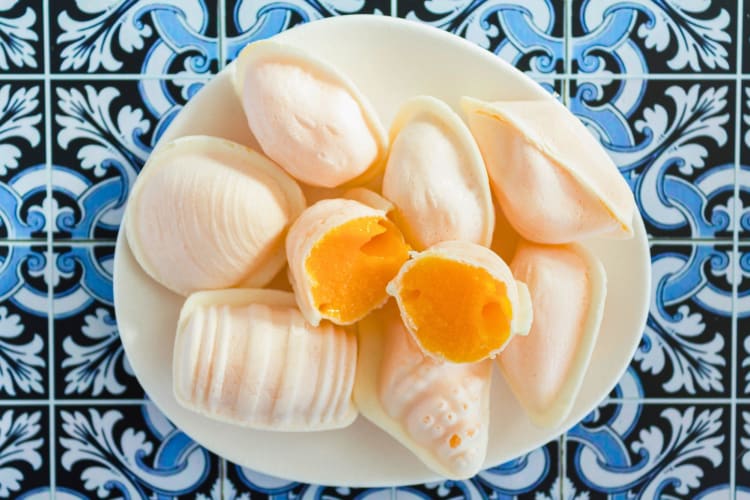
18. Bolas de Berlim
Last up in this guide to the best food in Lisbon is Portugal’s take on the German Berliner doughnut. Brought over during World War II by German Jewish families, the treat soon caught on. Portuguese bakeries swapped the classic fruity filling for a rich, velvety egg cream, making it uniquely their own.
Especially popular during the summer months, enjoying a bolas de Berlim on the beach is widely considered one of life’s greatest pleasures in Portugal. Thankfully, you won’t struggle to find your fix, since this Lisbon food is a staple in most bakeries.

Learn To Cook Lisbon Foods
If our guide to Lisbon food has inspired you not only to taste them all but to try your hand at cooking them, then check out cooking classes near you. Led by renowned local chefs, each with more than a decade’s experience at the pinnacle of their industry, these classes provide the chance to explore exciting new Lisbon foods and learn the skills required to make them.
Whether you’re looking for novel new culinary experiences at home or planning a trip to Portugal, add cooking classes in Lisbon to your itinerary. There are cooking courses to suit aspiring chefs of all levels.
Even if you’re unable to make a class in person, don’t worry — there are lots of online cooking classes available, too. Benefitting from the same expert guidance, virtual classes allow you to connect with your chef online, learning to cook Lisbon foods and other world cuisines, all from the comfort of your own kitchen.
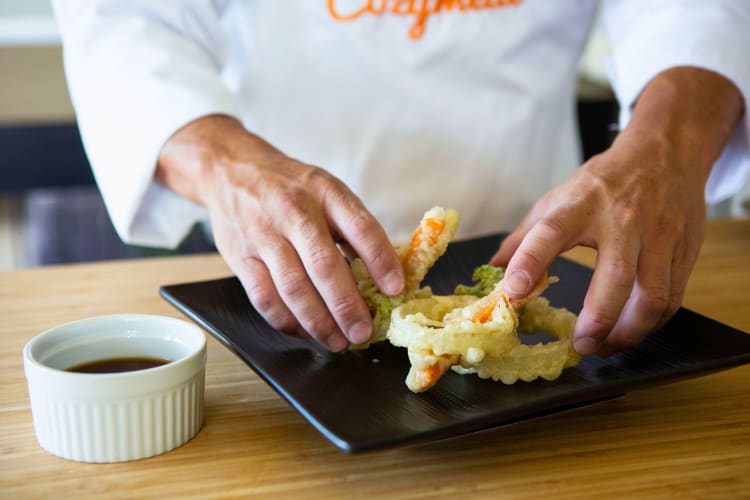
As one of Europe’s oldest capital cities, a trip to Lisbon provides endless opportunities for exploration, from architecture thousands of years old to gloriously sandy beaches set against a staggering mountain backdrop.
With so much to see and do, it’s reassuring to know that there is also a smorgasbord of Lisbon foods with which to fuel your adventures. Indeed, whether you’re salivating for seafood or have a penchant for pastry, Lisbon’s food menu has something for every palate.
For even more ways to explore Lisbon and beyond, check out other experiences happening on Cozymeal.



FOOD FOR THOUGHT?
Join the conversation.